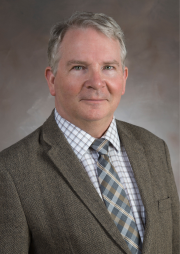
John Mosher
Visiting Professor
The University of Texas Health Science Center at Houston
McGovern Medical School
Department of Neurology
Magnetoencephalography (MEG) is the measurement of the minute magnetic fields generated by human neural activity. One billion times weaker than the Earth’s magnetic field, MEG requires sophisticated sensors and shielding to capture this activity over hundreds of sensors. Texas is home to five of these instruments, two of which are here in the TMC, including the Memorial Hermann Hospital.
My developing Brain Electrophysiology Laboratory (BEL) research focusses on the array signal processing of this MEG data and its electrical counterpart, electroencephalograph (EEG). An electrical engineer by training, I have expanded my research in the past decade into patients with epilepsy. My research now encompasses much of electrophysiological (E-Phys) modeling arising from human neural activity, as a natural counterpart to the hemodynamic modeling found in functional MRI. Working with surgical patients, our data now includes stereotactically implanted EEG data (SEEG) and electrocorticography (ECoG).
With my international colleagues, we have a long published record of generating novel algorithms for the filtering and decomposition of these data. My NIH grant colleagues and I have embedded much of our experience into a Matlab-based program called Brainstorm, which can be downloaded for free at its University of Southern California website. Brainstorm is a toolbox funded by NIH through several successive R01s, with a strong emphasis on visualization and manipulation of the magnetic resonance images (MRIs) and the overlays of the corresponding E-Phys data. A second NIH U01, joint with Massachusetts General Hospital and Boston Children’s Hospital, brings these algorithms into real-time operation with EEG and MEG data. A third NIH R01 catalogs the SEEG data over hundreds of epilepsy patients into one single aligned brain atlas.
My future work is expanding in the signal extraction of data biomarkers from seizure onset data, or from the evoked responses/seizures due to direct electrical stimulation of the brain.
McGovern Medical School Faculty
Education & Training
Ph.D., University of Southern California, 1993







